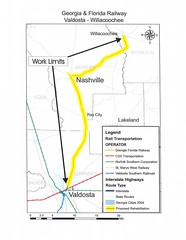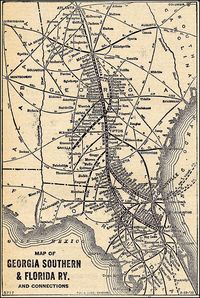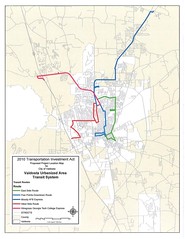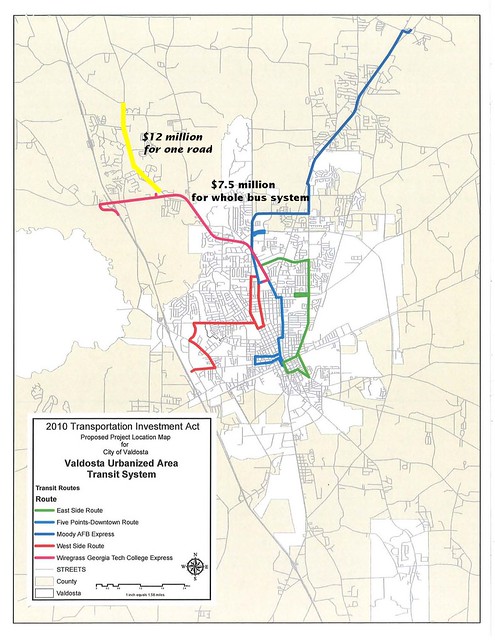Subject: School System Unification Message
Dear Chamber Members:
Below is a letter that the Chamber Board of Directors would like to
share with all of our members. The letter is being sent today to all
members of the Valdosta City and Lowndes County School Boards and both
Superintendents. In a meeting yesterday of the Chamber Board, there was
strong consensus
to maintain our commitment to school system unification
and to CUEE.
|
Both school boards voted in open meetings, with the vote of each
member recorded on video.
Yet the chamber just has “strong consensus” and we don’t know who
voted which way for what.
That’s the kind “high road” we’ve come to expect from
proponents of “unification”.
|
Most important, the Board members were firm in their belief
that the Chamber’s role in the upcoming discussions regarding school
system unification must remain “on the high road.” Thank you for your
support of the Chamber in this effort.
Tom Gooding
Chairman of the Board
Valdosta-Lowndes County Chamber of Commerce
September 9, 2011
TO: Valdosta City and Lowndes County School Board Members and Superintendents:
The mission of the Valdosta-Lowndes County Chamber of Commerce is to
serve as a unifying force, a focal point for enhancing the economic,
social and cultural well-being of the communities it serves. In this
role, the Chamber has been a leading voice for many of the critical
issues facing Valdosta and Lowndes County, including the ongoing debate
around unification of our separate local school systems.
The Chamber does and will continue to energetically support school
unification. Our Board of Directors voted unanimously
to support unification
|
Unanimously?
But your chairman says it was “strong consensus”.
Maybe we’re talking about some previous unanimous vote.
In which case apparently even the Chamber’s board is no longer
unanimous in support of “unification”.
|
and polling showed the overwhelming support of some 78% of
our membership (over 1,500 strong) for unification as well. The Chamber
did not take on this effort lightly and would not have done
so without the belief that the unification of the two school systems would far
outweigh any perceived disadvantages.
The business leaders of our community are disappointed
|
Really? The Chamber speaks for all business leaders of our community?
Funny how I’ve run across quite a few who don’t agree with the Chamber
on this issue.
|
that the
debate around school unification has recently become divisive and more
importantly misleading, based on emotional and fear arguments rather than
facts. As you know the Chamber has been a long-time community advocate
for children and believes a unified school system is the first step to
ensuring equal opportunity, improving educational achievement, and thus
enhancing the economic well-being of our entire community.
It has been said that “business” is behind the Chamber’s unification
efforts, as if making our city and county increasingly attractive to
business and industry, which can provide jobs to both the parents of
our children and, upon graduation, the children themselves, were a
negative. It isn’t.
Our existing businesses and industries are disappointed that our local
public schools are not producing graduates who are qualified for today’s
workforce, not to mention the substantial number of students who drop out
well before graduation. The statistical reality is that Valdosta High
School has not met the State of Georgia’s AYP (annual yearly progress)
standards for five consecutive years. It is likely that when the state
releases its graduation rates this year using the new, more accurate
federal standard for measuring graduation rates, both of our school
systems will show significant decreases in graduation rates.
Here in 2011 we continue to
 Um, how about stop using “County Schools” as a selling point for
subdivisions?
Um, how about stop using “County Schools” as a selling point for
subdivisions?
|
endure schools that are essentially segregated by economic status. Unless
something
changes dramatically,
this community will continue to travel
a path
of racial and economic resegregation.
The Chamber is disappointed in the recent actions taken by the two School
Boards and also by Dr. Cason and Dr. Smith for blurring the facts
in their recent letters to the editor of the Valdosta Daily Times.
That’s pretty rich considering
the VDT’s own editorial
 apologized to Dr. Smith that the VDT had “unintentionally fanned the flames”,
and the same editorial provided a list of questions it said
consolidation proponents haven’t answered.
Tell me again who’s blurring the facts?
apologized to Dr. Smith that the VDT had “unintentionally fanned the flames”,
and the same editorial provided a list of questions it said
consolidation proponents haven’t answered.
Tell me again who’s blurring the facts?
|
Yes, there indeed have been improvements in our schools and for that the
Superintendents should be commended — but the overall pattern has not
changed significantly and the overall outlook for all of our children is
not encouraging. The Chamber also realizes school unification, by itself,
will not be the sole answer to every challenge. But the data
clearly
shows that communities of our size with a single, unified school system
are more successful in planning and implementing school reforms, have
greater parent and community involvement, and build stronger professional
programs for teachers and principals — all of which are critical factors
in raising student achievement and sustaining academic gains over time.
The citizens of Valdosta
clearly want the opportunity to vote on
unification.
More than 7,000 voters — more than those who have voted
in recent City elections — signed the petition calling for the upcoming
referendum.
As we go forward, the Chamber urges both School Boards to support and
encourage an
open and fair dialogue
about this issue.
More importantly,
rather than simply saying no
to unification as both School Boards and
both Superintendents have recently done,
|
Did the Chamber read the school board statements?
Each of them spelled out their reasoning at some length.
Here they are:
|
the Chamber also believes the
community would benefit from the School Boards and their Superintendents
coming forward to meaningfully participate in the dialogue of what
a unified school system would look like and
stating publicly that,
should the referendum prevail — a very real prospect — on Nov. 8,
both School Boards will work together to ensure a smooth planning and
transition process to a unified school system.
| |
So the Chamber wants the school boards to say they expect
 the referendum to succeed, right after both boards said they don’t
want it to succeed.
Kind of like how CUEE told people that if they signed the petition
for a referendum, that didn’t mean they were for “unification”.
And how CUEE counts anybody who attends its committee meetings as
supporters, even if they just went to see what CUEE was up to.
Is such Orwellian double-speak what we want taught to the children of
our community?
the referendum to succeed, right after both boards said they don’t
want it to succeed.
Kind of like how CUEE told people that if they signed the petition
for a referendum, that didn’t mean they were for “unification”.
And how CUEE counts anybody who attends its committee meetings as
supporters, even if they just went to see what CUEE was up to.
Is such Orwellian double-speak what we want taught to the children of
our community?
Besides, both school boards said in
their statements that they
were open to discussion, so the Chamber pretending it is making
the first move on this is, ah, disingenuous.
How about if the Chamber and CUEE state publicly that there’s
a very real chance that the referendum will not pass, now that
both school boards and the VDT have come out against it,
and if it doesn’t pass the Chamber and CUEE will give up on
“unification” and not bring it up again?
|
A number of communities throughout Georgia and the South have merged
their city and county school systems during the past 15-20 years. Indeed,
there are only some 22 separate city and specialized school systems left
in Georgia versus 159 county school systems in our state.
| |
On the one hand Valdosta and Lowndes County aspire to metropolitan status.
 On the other hand, the Chamber wants to compare us to every county
in the state, no matter how small.
Yes, Lanier County has a unified school system.
No offense to Lanier County, but it also has only about 10,000 people
to Lowndes County’s approx. 109,000 people.
On the other hand, the Chamber wants to compare us to every county
in the state, no matter how small.
Yes, Lanier County has a unified school system.
No offense to Lanier County, but it also has only about 10,000 people
to Lowndes County’s approx. 109,000 people.
However, if “unification” passes, Lanier County, already by far
 the fastest growing county around here, will grow even faster
as bright flight runs beyond the “unified” school system.
Unless the Chamber and CUEE plan to drag all of Lanier, Echols,
and Brooks Counties into their “unified” school district,
the metropolitan area will not be unified.
the fastest growing county around here, will grow even faster
as bright flight runs beyond the “unified” school system.
Unless the Chamber and CUEE plan to drag all of Lanier, Echols,
and Brooks Counties into their “unified” school district,
the metropolitan area will not be unified.
 Also among those cities with their own school systems is Dublin,
which landed that MAGE Solar plant.
Apparently having two school systems is not an impediment
to getting industry to move in, after all.
Also among those cities with their own school systems is Dublin,
which landed that MAGE Solar plant.
Apparently having two school systems is not an impediment
to getting industry to move in, after all.
|
The results
in terms of student performance, tax rates, retaining professional
faculty and increased community support, while not perfect, are very
encouraging. We would urge the School Boards and other interested parties
to study those efforts.
| |
Once again the Chamber cites no evidence.
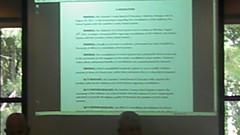 Apparently
the Lowndes County Board of Education did study consolidated school districts,
since its
resolution
concluded consolidated school districts
neither improved education nor saved money;
quite the opposite: taxes went up.
Since CUEE and the Chamber don’t actually provide any information
on the “results” they find fit their confirmation bias,
LCBOE is more credible on this.
Apparently
the Lowndes County Board of Education did study consolidated school districts,
since its
resolution
concluded consolidated school districts
neither improved education nor saved money;
quite the opposite: taxes went up.
Since CUEE and the Chamber don’t actually provide any information
on the “results” they find fit their confirmation bias,
LCBOE is more credible on this.
|
The Chamber Board of Directors itself
looks forward to meeting with
members of both School Boards to discuss how we might work together
on behalf of our children, sooner rather than later. We take this
opportunity to formally invite the members of our School Boards and our
Superintendents to meet with us. If not now, when?
Where was the Chamber Board at the recent school board meetings?
 If not then, why not?
FVCS was quite visible, but CUEE and the Chamber were not visible.
Does “The Chamber Board of Directors itself”
only appear behind closed doors, not in open meetings?
If not then, why not?
FVCS was quite visible, but CUEE and the Chamber were not visible.
Does “The Chamber Board of Directors itself”
only appear behind closed doors, not in open meetings?
Maybe “itself” should stop trying to dictate to everybody else.
-jsq
|
Sincerely,
Tom Gooding
Chairman of the Board of Directors
Myrna Ballard
President
 The previous member of the
Mental Health, Developmental Disabilities, and Addictive Diseases Regional Planning Board retired from the board after a term that expired in July.
Previously they appointed Mrs. Henderson, I think at the meeting
a month ago,
but for some reason she could not serve.
Another person is applying.
She has not yet supplied a resume; they hope to see that by tomorrow.
The previous member of the
Mental Health, Developmental Disabilities, and Addictive Diseases Regional Planning Board retired from the board after a term that expired in July.
Previously they appointed Mrs. Henderson, I think at the meeting
a month ago,
but for some reason she could not serve.
Another person is applying.
She has not yet supplied a resume; they hope to see that by tomorrow.















